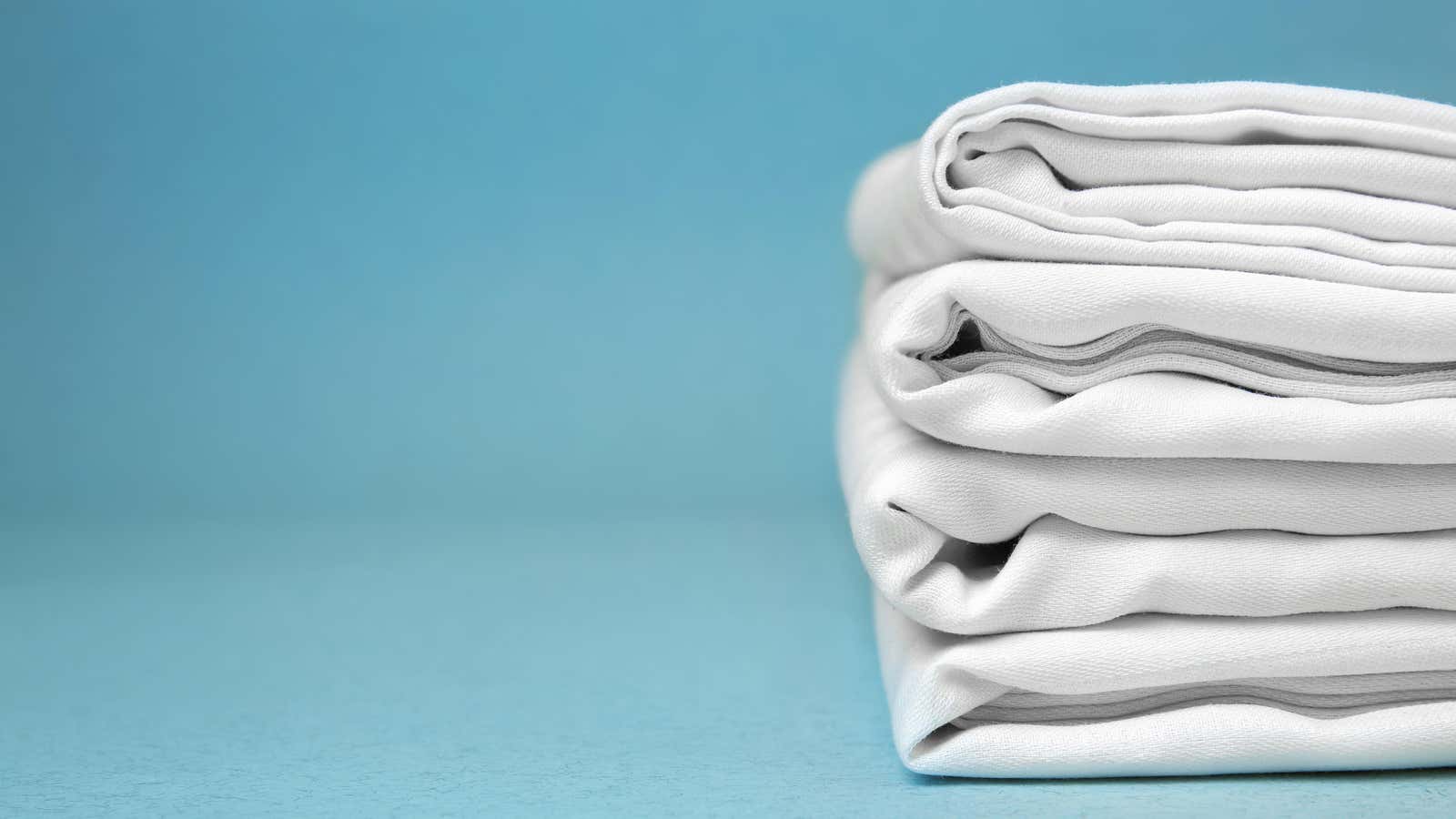How to Soften Rough, Scratchy Sheets Without Fabric Softener

There’s nothing like the feeling of climbing into bed after putting on clean new sheets. But if you’re used to worn cotton sheets, or jersey, bamboo, or microfiber sheets, a new set of sheets (especially percale, linen, or other higher-grade cottons) may not work. be as soft as you would like them to be after one (or several) washes.
And it’s not just a matter of using fabric softener and having your stiff sheets suddenly feel worn and comfortable: it means trying new washing and drying methods. Here’s what you need to know.
What causes sheets to become hard and scratchy?
There are several different reasons why your sheets may feel scratchy or hard, and some are easier to soften than others. Generally speaking, here are some of the most common reasons why your sheets feel a little rough:
- Brand new sheets (of any material) usually have a chemical coating that makes them look and feel crispy (i.e. tough), so they look better in the package.
- Old sheets can feel rough if they have not been washed and/or dried properly.
- Sheets that have been stored in a warehouse for a long time can dry out and become rough.
- Poor quality sheets can scratch even after repeated washing.
- Sheets made of polyester or nylon can roll (form into tiny balls) over time.
- If you’re used to softer synthetic sheets, then 100% cotton sheets can feel rough by comparison (especially percale).
- You are using more detergent and/or fabric softener than recommended by the manufacturer.
- You are overfilling the washing machine and the detergent cannot completely rinse out
How to soften rough, scratchy sheets
Ready to soften those sheets? Here are some methods to consider:
Shave peeling
If your sheets are piling up before you do anything else, you’ll want to get rid of those pesky little balls. You can use a special fabric razor if you already have one, but a disposable or flat razor will work too. Shave the sheets in the same way as you would your face, legs, etc., being careful not to cut the fabric.
After you’ve finished shaving, use a lint roller or duct tape to remove any leftovers. When you’re done, you can use one of the methods below if they’re not soft enough yet.
Washing methods for softening sheets
Get rid of chemicals on new sheets
Get your new sheets softer faster by getting rid of packaging chemicals . To do this, put the sheets in the washing machine and select a setting with warm or cool water (anything but the hot setting, basically). Add one cup of baking soda (and nothing else) while the drum fills with water.
When it comes to the last rinse, make sure the machine is set to cold water and add one cup of white vinegar. After completing the last cycle, leave the sheets in the machine and wash them again using half the amount of detergent as usual.
Use baking soda and vinegar for general softening.
Instead of detergent, wash sheets with one full cup of baking soda and ½ cup of vinegar and run one full cycle—starting with hot water and then switching to cold during the rinse cycle.
Add Vinegar to the Wash Cycle
Add 1/2 cup of white vinegar to the wash cycle along with your regular detergent. Vinegar will soften and refresh your sheets.
Bath sheets with Epsom salt
From time to time – especially when your sheets are a little scratchy – skip the washing machine and take a bath . Fill the tub with cold water, add about 1/3 cup Epsom salts and stir until the salt is completely dissolved. (Use a wooden spoon to avoid putting your hands in cold water for a few minutes).
Soak sheets overnight, then rinse thoroughly the next day. Dry sheets if possible. Otherwise, use one of the drying methods mentioned below.
If you don’t have (or don’t want to use) Epsom salt, you can replace it with six tablespoons of borax or two handfuls of table salt and follow the instructions above.
Drying methods for softening sheets
Linear drying
After you try one of these washing methods, instead of shoving your sheets in the dryer, line dry them if possible. This will help soften the fibers more than tumble drying.
Use drying balls
Ditch the dryer sheets and use dryer balls instead (which are usually made from tightly pressed wool, plastic, or rubber). This will help fluff up your sheets.
Drying at a lower temperature
Setting the dryer to the highest possible temperature can speed things up, but it can also make your sheets rough. Instead, choose the lowest temperature your schedule allows. Drying on less heat gets you closer to softness when line dried, especially when using dryer balls.